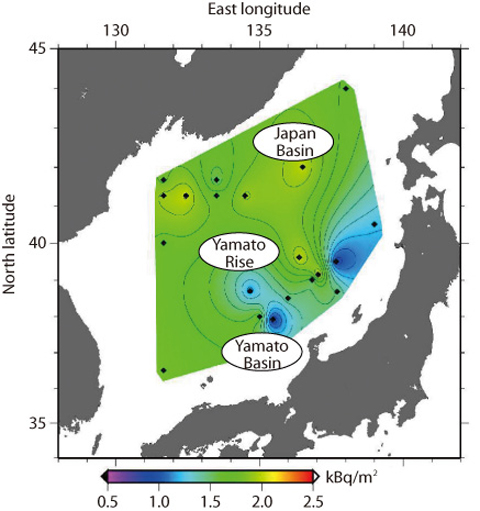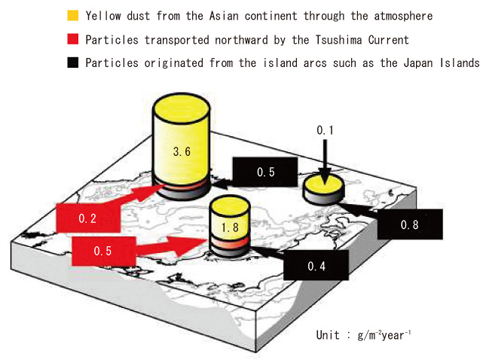
Fig.7-15 Distribution of the inventory of cesium-137 (137Cs) in seawater originating from global fallout due to atmospheric nuclear weapons testing

Fig.7-16 Settling flux and the origin of aluminum at three regions in the Japan Sea
We have carried out expeditions in the Japanese and Russian exclusive economic zones (EEZ) of the Japan Sea for 10 years to clarify seawater circulation and transport processes of materials in the sea. As a result, for the first time, we have made distribution maps of anthropogenic radionuclides in the Japan Sea and outlined the transport processes of radionuclides in the sea. The Japan Sea expeditions by JAEA started with its participation in the Japanese-Korean-Russian joint expeditions of 1994 and 1995. Through 18 expeditions, JAEA succeeded in covering almost all areas of the Japan Sea that can be observed at present.
The results of these expeditions are summarized below.
(1) Concentrations of anthropogenic radionuclides in seawater vary over regions and depths. Distributions of radionuclides in middle-deep layers of the sea show a southeastward lateral transport of radionuclides from the Japan Basin to the Yamato Basin, detouring around the Yamato Rise due to seawater movement (Fig.7-15). Vertical convection of seawater in winter plays an important role in transport of radionuclides to the lower depths of the northwestern Japan Sea.
(2) Studies of settling particles reveal accumulation of particulate radionuclides in the seabed from lateral transport of particles originating in the East China Sea and the Japan Islands, as well as from yellow dust from the Asian Continent via the atmosphere (Fig.7-16).
(3) Anthropogenic radionuclides detected in seawater and seabed sediments are inferred to originate from global fallout from atmospheric nuclear weapons testing. The radiological consequences of these radionuclides on human physiology are negligible.
These findings enable understanding of seawater circulation and transport processes of materials in the sea. Furthermore, the dataset on the distribution of anthropogenic radionuclides established by this study provides background data in assessing the radiological consequences in cases of radioactive waste disposal in the sea or nuclear emergency response to accidental releases of radionuclides in or near the Japan Sea.